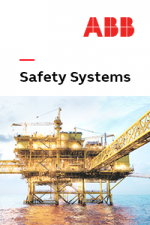- Russian Dam Disaster: Assessing the Cost of Failed Safety Practices
- Analyzing the Human Element of the Russia Dam Disaster
- Turbine 2: How a Track Record of Uncertainty Led to Disaster
- Russian Dam Disaster: A Reckoning for Bypassed Safety
- When Running People Past Their Breaking Point Effects Safety: The Bayer Crop Science Incid…
Analyzing the Human Element of the Russia Dam Disaster
All manufacturing operations require a safety plan. However, risks can only be minimized when that safety plan is studied, understood and faithfully enacted by the critical stakeholders. These considerations need to involve the human element.
Consider how the human element affected the disaster that occurred at the Sayano–Shushenskaya hydroelectric power station in Khakassia, Russia, on August 17, 2009. First there was a loud bang from one of the operating turbines (Turbine 2). Then the turbine’s cover shot up through the ceiling and a 920-metric ton rotor was violently dislodged from its seat. Soon afterward, tons of water spouted from the cavity of the turbine and into the machinery hall.
At that moment, chaos ensued.
The machinery hall and rooms below its level flooded. At the same time, the power station's main control panel received the alarm, and power output fell to zero, resulting in a blackout. The safety system, which was dependent upon power to operate, was now rendered useless.
The steel gates to the water intake pipes of the turbines, weighing 150 metric tons each, had to be manually closed. This was performed by opening the valves with hydraulic jacks and keeping them open from 8:35 to 9:20. The operation took 25 minutes, which is near the highest speed that such an operation allows.
The emergency diesel generator was started at 11:32. At 11:50, the opening of 11 dam spillway gates was initiated and completed at 13:07.
When Turbine 2 broke apart violently, 75 people were killed and more than 40 injured. Both the turbine hall and engine rooms were flooded, and a collapsed ceiling contributed to 9 of the 10 turbines at the site being damaged or destroyed.
Humans played major role
Human factors played a major role in the build up to the disaster and also, as the disaster unfolded, they worked to save lives.
After the initial rupture, the water level rose, and employees raced toward the main entrance. Among the fleeing workers were supervisors in charge of safety and emergency response. On the fourth floor, operators telephoned their supervisors and their supervisors’ managers seeking guidance on a contingency plan. No answer.
The official report, released on October 3, identified poor management and technical flaws as the main causes of the accident.
The cascading nature of an unfolding disaster
Safety incidents rarely occur as the result of a singular independent occurrence, but rather result from a series of events and/or bad decisions that lead up to the accident. Over time, when small, overlooked detailed issues are addressed and/or fixed, accidents further down the road are averted.
For example, when Turbine 2 was placed under maintenance during the period extending from January to March 2009, after the repairs were completed, the turbine wheel was not properly rebalanced. This might have contributed to excessive turbine vibration between April and July which led to the turbine’s shut down (prior to the August 16 “emergency” restart). That was the day when Turbine 2 was hastily pushed back into operation by the Siberian Unified Dispatching Control Centre (UDCC) due to the Bratsk power plant fire some 500 miles away.
When recommended performance band limits are exceeded, the turbines will begin to vibrate due to the force of water flow. This, in turn, leads to degradation of the turbine over time, due to excessive vibrations and shocks. The problem was observed many times and yet the load on Turbine 2 was not reduced. During the morning of the accident, the plant general director, Nikolai Nevolko, was celebrating his 17th work anniversary. While he was away early in the morning to greet arriving guests, the levels of vibrations were very high because Turbine 2 was operating in the “not recommended” zone to meet grid demands.
Accountability has to be communicated clearly
None of the 50 staff present around Turbine 2 had authority to make any decisions about taking further actions to cope with the increasing vibrations. They had become accustomed to those high levels of vibration and chose to ignore them.
The report of the accident listed former state-controlled utility chief Anatoly Chubais who was said to have approved an order to allow the plant to continue operating despite known problems and what the report described as “lack of an adequate evaluation of its current safety conditions.”
Clearly, human factors play a major role when it comes to safety and accident prevention.
To better understand how some of the various mistakes that occurred over time should have been addressed and prevented, click here. To learn more about steps to take for ensuring better plant and control systems process safety click here.


